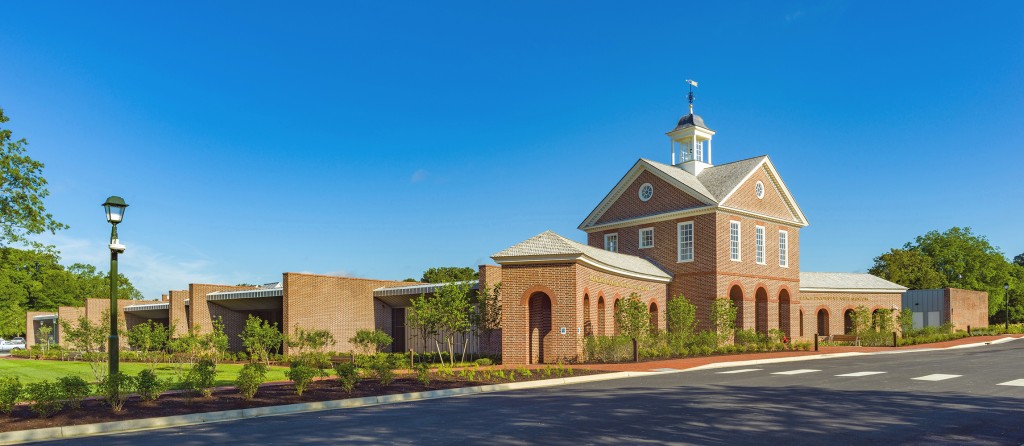WILLIAMSBURG, VA. — The first large-scale expansion and upgrade to the building that houses the art museums of Colonial Williamsburg since they were first joined under one roof in 2007 is complete. Guests at the DeWitt Wallace Decorative Arts Museum and the Abby Aldrich Rockefeller Folk Art Museum (AARFAM) are now able to enjoy an enhanced visitor experience through a new wing that adds 65,000 square feet to the building, numerous improved amenities as well as several new exhibitions.
“Colonial Williamsburg’s collection reflects the scope and diversity of our shared history, and its objects tell remarkable stories that allow us to interpret that history,” said Ronald L. Hurst, Colonial Williamsburg’s Carlisle H. Humelsine chief curator and vice president for museums, preservation and historic resources. “We’ve been successful over the years in engaging guests through the art museums’ remarkable exhibitions and programs. Now, thanks to the generosity of our donors, we can offer an even more inviting, welcoming experience and share even more with our guests.”
The new art museums experience begins for visitors when they arrive at the new entrance, the Dixie D. Wolf Pavilion, located on South Nassau Street across from the pastoral site of the John Custis House and Garden. The entryway improves public access to the building as well as enables better visibility of the complex for those visitors arriving on foot from Colonial Williamsburg’s Historic Area. Once inside, visitors are led directly into the main level of the building and greeted by a vista through a grand concourse, Wolf Hall, off of which can be found some of the enhanced amenities at the art museums. These include a new lobby and orientation space in addition to access to both museums. Also, the museum café and store, which can now be accessed without a ticket, are significantly enlarged and bathed in natural light through expansive, new windows overlooking Bicentennial Park.
Additional improvements include guest services, such as improved car parking and parking for the mobility challenged; the Colonial Williamsburg bus stop is now situated at the main entrance as well. New and upgraded mechanical and climate-control systems are also included in the new wing as is space and equipment for efficient operations and exhibition presentations. This entirely donor-financed, $41.7 million project, which broke ground in April 2017, has been one of the primary capital priorities of The Colonial Williamsburg Foundation’s recently completed $600 million comprehensive campaign.
Designed by Samuel Anderson Architects of New York City, the new wing to the art museums provides a 25 percent increase in gallery space, which allows guests the ability to see considerably more of these outstanding collections on view. New galleries are designated for an introduction to the collections as well as for folk art; coins, currency and medals; archaeology; musical instruments; costumes; maps, prints and drawings; toys and dollhouses; tools and weapons; architectural preservation; paintings; silver and metals; as well as an additional space for changing exhibitions.
Two new exhibitions herald the expanded art museums: “The Art of Edward Hicks” and “American Folk Pottery: Art and Tradition.” Edward Hicks (1780-1849), one of the country’s best-known folk artists, painted a series of more than five dozen paintings of the beloved biblical prophecy of the lion and lamb known as the Peaceable Kingdom. Colonial Williamsburg owns the largest single collection of material by Hicks, and this exhibition which celebrates the artist’s life and art, marks the first time these works have been on view together since 1999. The objects featured in “American Folk Pottery” mark a celebration of the form, function and whimsical flourishes of these clay vessels that were made for both their functionality and the needs of their communities. Through nearly 50 examples, the work of their makers reflects the regional styles and traditions that were passed down through generations and inspire many modern folk potters from this rich legacy.
A third new exhibition, “Early American Faces,” will also premiere at the DeWitt Wallace Decorative Arts Museum. Through paintings and watercolors from both the art museums’ fine art and folk art collections, this exhibition will show visitors that the stories of all Americans – men, women, children, free, enslaved, American Indian, African American and people of European descent — are represented at these museums and within their collections.
Also new at the Wallace museum is “The Virginia-British Connection: British Paintings with Virginia Ties,” a portraiture exhibition that illustrates the strong ties between the British colony and its motherland.
These four new exhibitions accompany “British Masterworks: Ninety Years of Collecting at Colonial Williamsburg,” which opened at the Wallace Museum shortly before the museums closed due to COVID-19. Showcasing significant examples of British portraits, furniture and ornate decorative arts, these works had not been on view for many years until now.
Colonial Williamsburg reopened at reduced capacity on June 14 and continues to follow site-specific safety guidelines as part of the foundation’s COVID-19 business resumption plan and in accordance with the state’s plans for reopening. For more detailed information about Colonial Williamsburg’s safety guidelines, or to buy tickets online, www.colonialwilliamsburg.org.
The Art Museums of Colonial Williamsburg are open 9 am to 6 pm daily and are at 301 South Nassau Street. For information, 855-296-6627.





